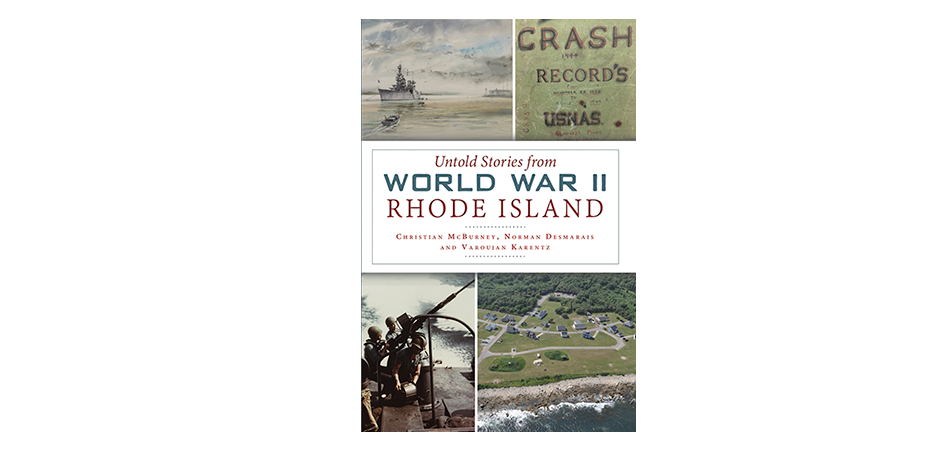Project Description
The story of Rhode Island’s extraordinary role in World War II is so big that it requires more than a single volume to tell.
As claimed in volume 1, World War II Rhode Island, Rhode Island’s contribution to the war effort far exceeded its small size. Its greatest contribution was in training Navy officers and sailors. More than 500,000 recruits were trained at the Newport Naval Training Station; some 100,000 Seabees were trained at Davisville; more than 10,000 pilots and 1,000 Combat Information Officers received instruction at Quonset Point; and some 20,000 PT boat officers and sailors were trained at Melville. Most of these men—and some women—moved on to active theaters of war.
Rhode Island was also on the front lines. Aircraft from Quonset Point, and destroyers from Newport, patrolled Atlantic waters searching for German submarines. Admirals Ernest J. King and Royal E. Ingersoll, based in Newport, commanded the U.S. Navy’s Atlantic Fleet (see the second chapter in this volume).
Rhode Islanders manufactured incredible amounts of military equipment and supplies, including producing torpedoes at the Navy Torpedo Station in Newport and designing and manufacturing the first Quonset huts at West Davisville. In this volume, a chapter discussing Woonsocket’s mills serves as a microcosm of the state’s manufacturing contribution.
Remarkably, five current and future U.S. presidents visited or trained in Rhode Island during World War II. Chapters in this volume describe President Franklin D. Roosevelt’s 1940 visit to Newport, John F. Kennedy’s training as a PT boat commander at Melville, and George H.W. Bush’s training as a pilot at Charlestown (where he wrote an affecting love letter to his new fiancée). Richard Nixon’s 1942 training at Quonset Point, and Harry S. Truman’s 1944 campaign visit to Providence and Pawtucket, are also covered.
Four chapters deal with extraordinary innovations. At Spraycliff Observatory in Jamestown, radar installed on fighter aircraft was developed, and courageous pilots stationed at Charlestown and Westerly used the radar for night fighter training. At Davisville, Seabees perfected pontoons that became a key to the D-Day landings on Normandy beaches. One pontoon they developed was a floating airfield that fighter planes tested on Narragansett Bay. At Chopmist Hill in Scituate, perhaps the nation’s most successful listening spy station was established. In Woonsocket, fake rubber tanks were produced that fooled German armies. This volume also describes the Harbor Entrance Command Post at Jamestown and forts in Little Compton that helped to protect these and other facilities in the state.
There are personal stories told here too. A reporter from the Westerly Sun recalls how the newspaper became the first to announce the attack on Pearl Harbor. Marie Duggins narrates her uplifting experiences as a WAVE at Quonset Point. Elisabeth Sheldon befriends pilots training at Quonset Point but suffers tragedy later. Residents of the summer community of Quonochontaug fondly recall their childhood wartime memories. Edward Swain Hope breaks a racial barrier by becoming the first black to train as a Seabee officer at Davisville. John Bradley agonizes, wondering if his spotting of German submarine U-853 could have avoided the sinking of a merchant vessel off Point Judith. Quonset Point’s commander, a war hero wounded commanding an aircraft carrier in the Pacific, shortly after the war tragically is killed in an airplane crash.
The final chapter identifies existing Rhode Island sites from World War II, many of which readers can visit today to deepen their appreciation of the state’s exceptional contribution to the war effort.

